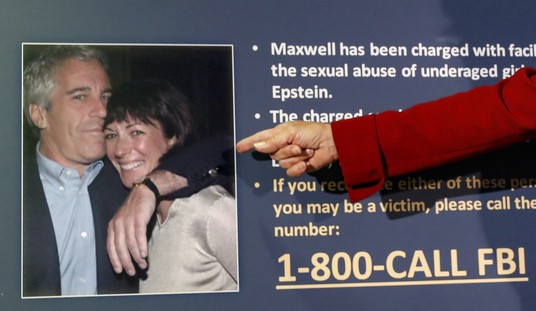The Inspector General’s report is out on the failure of the Veterans Affairs Department and it is NOT pretty. The report says 307K veterans with pending health care requests died while waiting for care. That’s 35% of all health care requests as of September 2014. There is a caveat to the 307K pending requests (emphasis mine).
However, due to data limitations, we could not determine specifically how many pending E [nrollment] S [ystem] records represent veterans who applied for health care benefits. These conditions occurred because the enrollment program did not effectively define, collect, and manage enrollment data. In addition, VHA lacked adequate procedures to identify date of death information and implement necessary updates to the individual’s status. Unless VHA officials establish effective procedures to identify deceased individuals and accurately update their status, ES will continue to provide unreliable information on the status of applications for veterans seeking enrollment in the VA health care system.
So basically the procedures are screwed up and completely useless. This is just horrific in the most awful way possible. The VA system is damned further when the IG gets into unprocessed applications (emphasis mine).
[W]e substantiated the fourth allegation that the H [ealth] E [ligibility] C [enter] identified more than 11,000 unprocessed health care applications and about 28,000 transactions related to application updates, correspondence, and alerts in January 2013. However, the oldest unprocessed health care application had a date of September 2012, only four months prior to discovery. This backlog developed because the HEC did not adequately monitor and manage its workload and lacked controls to ensure entry of WRAP workload into ES.
This means some of the 304K VA workers were either massively asleep at the wheel it came to doing their job or just so inundated with requests they couldn’t handle them. Some VA supporters might consider just increasing funds for training and staff, but the VA has seen its budget grow from $87.6B in 2009 to $152.7B in 2014. The 2016 budget request is $165.5B. This includes $70.2B in discretionary spending, with $63B going to medical care. So the department is asking for plenty of money to “help” veterans, but isn’t spending the money wisely.
The report goes further into the VA problems, including the fact some of the data may have been removed (emphasis mine).
We substantiated the third allegation that employees incorrectly marked unprocessed applications as completed and possibly deleted 10,000 or more transactions from the Workload Reporting and Productivity (WRAP) tool over the past 5 years. While the HEC often deleted transactions for legitimate purposes, such as the removal of duplicate transactions, information security deficiencies within WRAP limited our ability to review some issues fully and rule out manipulation of data.
So whatever filing system the VA uses doesn’t work and may have been edited to make it appear better than it actually was. The report also found horrific mismanagement in the department, including a decision to not discipline workers who screwed up.
However, according to a December 2010 memorandum provided by the former Deputy Director at the HEC, management determined in a subsequent review that applications were missing from ES. HEC management identified individual HEC staff who had incorrectly marked applications as complete in WRAP and had hidden the applications in their desks for processing at a later time. According to the HEC memorandum, a CBO human resources management official advised them against pursuing disciplinary action against staff because HEC leadership implemented the work process and thus had contributed to the situation (human resources management officers are responsible for advising management concerning employee relations issues in accordance with VA Handbook 5001, Part II, Paragraph 6).
What doesn’t make sense is why HEC didn’t use the 2010 memo to start solving problems. Things move slowly in government, but if the work process system was this bad, why wasn’t it fixed? A part of it might be the VA wasn’t interested in fixing the system because it didn’t want to lose any money. This is a horrible theory, but it isn’t like the VA hasn’t had issues for years. The IG discovered last year a VA supervisor in Hawaii was trying to hide data (emphasis mine).
The data manipulation happened last year when there was heightened scrutiny nationwide over how long veterans were waiting to see doctors. The electronic records altered in Honolulu dealt with benefits claims, not medical appointments. But the finding underscores that there are ongoing problems within the system.
It really shouldn’t be surprising how screwed up the VA Department is. The federal government’s efforts to “help” veterans has been rife with fraud all the way back to the 1920s. The very first Veterans’ Bureau commissioner, Charles R. Forbes, spent two years in federal prison for defrauding the U.S. Government. The Senate discovered he’d left thousands of pieces of mail from veterans unopened and hardly awarded any disability insurance to wounded vets. This should have been a klaxon warning of the highest order and signaled why the Veterans’ Bureau shouldn’t have existed. But the federal government wouldn’t get rid of the bureau because it would make elected officials look heartless. The Sweet Bill, which created the Veterans’ Bureau, was passed because the government was accused of not taking care of World War I veterans. This is unfortunately what happens when people look towards the government to solve a problem. The government created Social Security because the elderly didn’t have retirement cash. The government did Prohibition because too many people were drinking. Obamacare was done because people didn’t have health insurance.
This isn’t saying veterans shouldn’t be taken care of, it’s only questioning whether the government is the right instrument to administer the care. If the government decided to shut down the VA system tomorrow, charities would step up to help. Five Fingered Death Punch did a song about veterans who come back from wars and even provided a long list of veterans organizations. Gary Sinese’s foundation has a similar list and even points out why a one stop shop for all veterans’ needs isn’t the way to go (emphasis mine).
For many years prior to establishing the Foundation, Gary supported our troops by working with and raising awareness for several military charities. With the enormous needs in the military and veterans community, one charity alone cannot fulfill them all.
It’s time for the federal government to gradually start closing down the VA department. The move will probably take at least 20 years with a gradual reduction of benefits until the budget reaches zero. What the government could do instead is start partnering up with military charities. This doesn’t mean giving them money, but simply giving them access. If a vet is in the hospital, then the charities could be allowed to hand out information on what they do and how they help. Veterans looking to get medical care should be allowed to go to their own doctors, instead of VA Hospitals. Unfortunately, this probably isn’t going to happen because it takes a disciplined Congress and disciplined President to carry out smaller budgets. What people in the freedom and liberty movement can do is keep their elected officials accountable. This means paying attention to things, which is admittedly easier said than done. But it is possible, it just takes work.








Join the conversation as a VIP Member